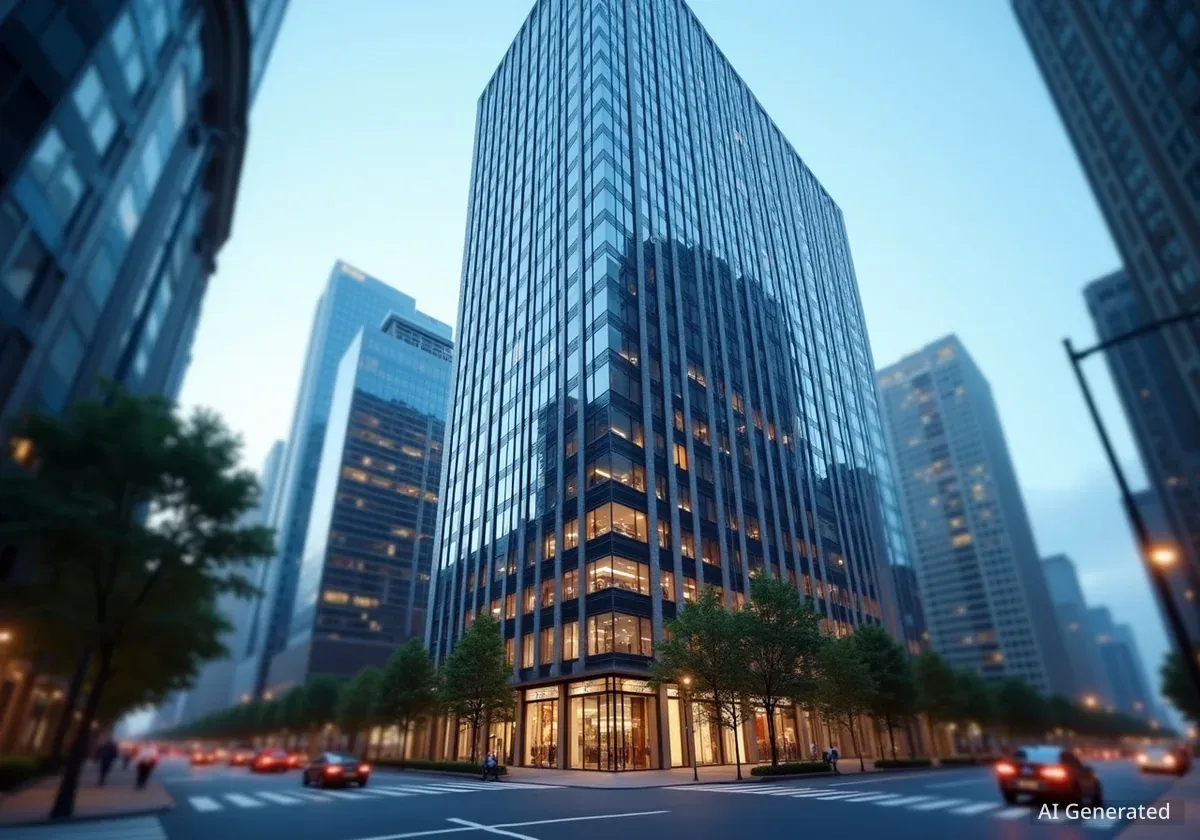The United States commercial real estate market is currently experiencing a significant divergence, with technology-driven sectors like data centers showing unprecedented strength while the traditional office market continues to face substantial challenges. A new analysis reveals that while asset classes tied to the digital economy are thriving nationwide, other sectors are navigating a complex landscape of regional economic shifts, interest rate uncertainty, and evolving workplace habits.
Key Takeaways
- Data Centers: This is the strongest commercial real estate asset class across the country, with high demand in markets from Atlanta to Seattle.
- Office Sector: Remains the most challenged category, though there are early signs of recovery in specific submarkets like New York's Class A buildings and San Francisco's AI-driven tech hub.
- Industrial and Multifamily: These sectors show consistent resilience. Industrial is particularly strong in Houston and New York, while multifamily demand is high in Boston, Dallas, Los Angeles, and New York.
- Economic Factors: Rising construction costs and potential tariffs are creating uncertainty for developers, while anticipated interest rate reductions could stimulate more transactions later in the year.
The Digital Gold Rush: Data Centers Lead the Pack
The most consistent trend in commercial real estate is the explosive growth of data centers. Fueled by the expansion of cloud computing, artificial intelligence, and the broader digital economy, demand for these facilities is at an all-time high across the United States. This sector stands out as the top performer in nearly every major metropolitan area.
According to market experts, this is not a localized phenomenon but a nationwide boom. Cities like Atlanta, Chicago, Houston, and Seattle all report data centers as their most active and sought-after asset class. In Washington, D.C., they are described as a "hot commodity," even as other sectors feel the pressure from shifts in federal employment.
Nationwide Demand
The demand for data centers is so robust that it has created infrastructure bottlenecks in some areas, such as Chicago, yet investment continues to pour in due to the sector's critical role in modern commerce and technology.
In Houston, the demand is characterized as "very high," placing it alongside industrial real estate as the city's strongest market segment. Similarly, Seattle's real estate attention is squarely focused on data centers while it awaits broader market catalysts like lower interest rates. This singular focus highlights the sector's outsized importance in the current economic climate.
A Tale of Two Sectors: Office vs. Industrial
The contrast between the office and industrial sectors provides a clear picture of the market's divergent paths. The industrial market, driven by e-commerce and logistics, remains a reliable performer. Houston and New York, in particular, are leading hubs for industrial activity, with strong demand for warehousing and last-mile distribution centers.
In Chicago, industrial real estate is considered a "reliable performer," maintaining steady growth. Even in Los Angeles, where there are some concerns about tariffs and the development pipeline, the industrial sector is stabilizing with rising rents. This reflects a fundamental need for physical space to support the country's supply chain.
The Ongoing Struggle for Office Space
Conversely, the office sector remains under significant pressure nationwide. The widespread adoption of remote and hybrid work models has created persistent vacancies and uncertainty. According to Kwame Benjamin, a Partner at Seyfarth, the Atlanta office market "continues to dig out from the new workplace realities."
This sentiment is echoed across the country. In Houston, the office market is lagging with limited momentum, and in Los Angeles, its recovery is slow, with many distressed assets. The Washington, D.C. market has been adversely affected by layoffs in the federal government, further dampening demand for downtown office space.
"With San Francisco companies starting to impose more in-office attendance requirements, the explosive growth of AI companies in the Bay Area... the local office market is primed for a comeback."
However, there are pockets of optimism. In New York, demand is concentrated in high-quality Class A office buildings, suggesting a "flight to quality" where companies are willing to pay a premium for modern, well-located spaces. San Francisco is also showing early signs of a rebound, uniquely tied to the rapid growth of AI companies and stricter return-to-office mandates.
What is a Class A Office?
Class A refers to the highest quality office buildings in a market. These properties typically feature modern construction, prime locations, high-end finishes, and extensive amenities. The strong demand for Class A space indicates that top companies are prioritizing premium environments to attract and retain talent.
Regional Market Spotlights and Nuances
While broad trends exist, commercial real estate remains a highly localized industry. A closer look at individual cities reveals unique dynamics shaping investment opportunities and challenges.
East Coast and Southeast Dynamics
- New York: The market is steady, with a clear division. Miles Borden, a Partner at Seyfarth, notes that demand is focused on "luxury multifamily, high-end retail, and Class A office," while weaker assets struggle.
- Boston: A strong job market is driving momentum. However, partners Catherine Burns and Eric Greenberg point out that "tariffs mixed in with already high regional costs are creating some uncertainty for investors and developers."
- Charlotte: This market stands out for its broad-based strength. According to Partner Eric Sidman, Charlotte "continues to be relatively strong across all asset classes."
- Atlanta: Activity remains steady, but the industrial market is moderating after years of aggressive supply growth, according to Kwame Benjamin.
Midwest and Texas Powerhouses
In the country's interior, major hubs are experiencing their own distinct market conditions. The Dallas-Fort Worth metroplex continues to be one of the nation's top-performing commercial real estate markets overall, as noted by Partner Amy Simpson.
Chicago presents a more mixed picture. Michael Merar, a Partner at Seyfarth, explains that while its office market is under pressure, "retail continues to show signs of resilience, with losses in big-boxes seemingly being offset by demand for smaller storefronts and lifestyle-oriented destinations."
West Coast Variations
On the West Coast, Los Angeles maintains strong demand for multifamily housing, and its industrial market is finding its footing. The retail sector shows "cautious optimism" with stable vacancies but slow rent growth, according to partners Tim Farahnik and Stacy Paek.
Seattle's market is in a holding pattern, with many investors waiting for lower interest rates and increased office attendance to spur activity. Until then, as partners Jami Balint and Bob Over state, the primary focus remains on data centers.
Looking Ahead: Economic Headwinds and Tailwinds
Several macroeconomic factors will influence the direction of the commercial real estate market in the coming months. The potential for reduced interest rates later in the year is widely expected to act as an accelerator for deal-making across all sectors. A more favorable rate environment could unlock capital and boost transaction volumes that have been suppressed by higher borrowing costs.
At the same time, challenges persist. Tariffs could disrupt the industrial sector by altering supply chain logistics and manufacturing decisions. Furthermore, rising construction costs continue to complicate new development projects, potentially limiting supply and putting upward pressure on rents for existing properties.
The future of the U.S. commercial real estate market will likely be defined by this interplay of forces. The digital economy will continue to create immense value in sectors like data centers, while the recovery of the office market will depend on local economic drivers, corporate policies, and the ability of building owners to adapt to new demands for flexibility and quality.





